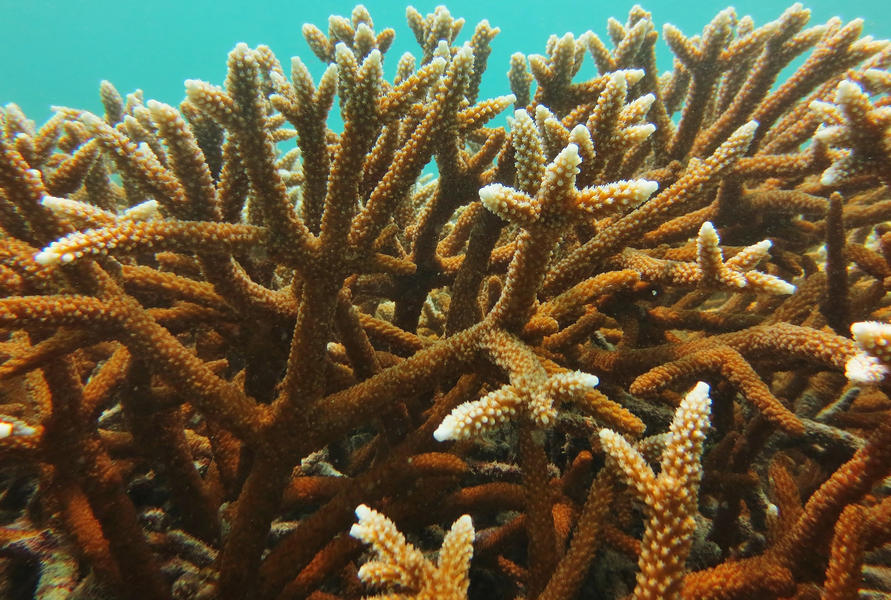Author Name
Lauren E. Fuess, Grace Klinges, Alex Veglia, Ashley Rossin, Michael Studivan, Blake Ushijima
The rapid spread of SCTLD throughout Florida’s Coral Reef has had devastating impacts on these essential coastal ecosystems. This rapid spread has hampered efforts to study many aspects of disease biology, including investigation of causative agents and factors which contribute to host resilience. Characterization of these traits is essential to creation of improve management strategies for Florida’s Coral Reefs, but depends on availability of samples from disease-susceptible corals with no prior disease exposure. This project leveraged unique samples from Dry Tortugas National Park (DRTO) samples before and during SCTLD arrival to investigate numerous aspects of SCTLD biology. By combining integrative ‘omic and histological analyses of corals sampled through time we provide novel insight regarding the patterns underlying SCTLD outbreaks across multiple species of corals.
Assessment of bacterial community function has revealed clear patterns of host and microbial responses associated with transitions from a healthy to diseased state. Key bacterial taxa associated with SCTLD, such as Halarcobacter and Desulfocella, were predictive of disease state and led to observed enrichment in genes associated with anaerobic and sulfur-related metabolism. Analyses of raw metagenomic reads, more so than complete genome assembly, have allowed for more complete functional profiling of the bacterial community while expanding our analyses past dominant microbial members. Bacterial functional groups were correlated with conserved host genes, which identified highly connected modules, particularly linking host genes for DNA repair and apoptosis with microbial anaerobic respiration and toxic metabolite production. These findings support a model in which disease progression is driven by a host-microbe feedback loop that impairs healing and accelerates tissue degradation.
Virus community analyses provided further evidence of increased activity among diverse core viral lineages (those consistently present in healthy corals) within diseased tissues, suggesting a cumulative viral contribution to SCTLD etiology rather than the involvement of a single novel viral pathogen. These patterns are consistent with upregulated antiviral responses observed in host gene expression data. However, no consistent patterns in virus-like particle abundance were observed in transmission electron microscopy (TEM) images from either in situ (this project) or ex situ (C21169; PI Ushijima) diseased tissue samples. Establishing core virome members for coral species inhabiting Florida’s reefs, as done here, improves our ability to identify potential pathogens by helping distinguish novel invaders from active members of the resident viral community. Despite this progress, our ability to investigate coral virus communities remains limited by the lack of baseline data from non-diseased conditions.
Histological data generated herein has been combined with a larger set of disease histology in an important first step towards generation of improved methods for coral diagnostics from histological samples. This integration will allow for improved methods for diagnosing coral diseases and assessing health via histology in a variety of settings, including nurseries and protected areas.
Analysis of transcriptomic data failed to identify species-independent markers of disease resistance, but did find several species-independent markers of response, particularly at early stage of disease. These included orthologs related to immune recognition, reactive oxygen processing, inflammation, and antiviral processes. Additionally, integration of ortholog data with microbial and viral community data demonstrated strong impacts of proposed host and Symbiodinanceae symbiotic microbes on host gene expression and immunity, regardless of host species.
This project also included tasks associated with other FDEP projects, including a related laboratory disease challenge experiment with a time series aspect (C21169; PI- Ushijima). Immunological analysis of samples collected from that project did not find any differences in immune response between control and exposed colonies of Montastraea cavernosa. Immune activity did significantly change over time, likely as a result of experimental stress (lack of feeding, water changes, etc.), which may have dampened our ability to detect experimental effects.


